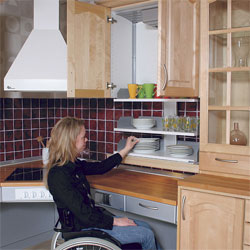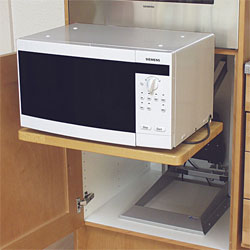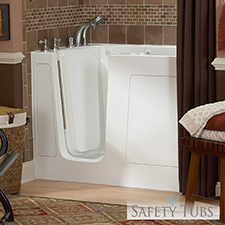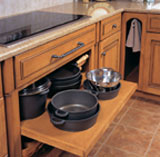Universal Design – Differences From Barrier Free
What is the difference between “Barrier Free” and Universal Design?
Barrier free implies adhering to a code that specifies modifications that need to be made to existing designs to make them handicap accessible. Universal Design seeks to incorporate accessibility for those with and without disabilities in the planning stage. Another difference between the two is the look. One goal of Universal Design is to keep the home from looking institutionalized. Those who wish to age in place, plan for the future and those with disabilities don’t have to settle for an ugly house. U.D. allows the design to remain style conscious- “Resort Spa vs. Rehab Hospital”.
To assist you in planning a space that incorporates Universal Design we have listed many features below for your consideration and implementation.
Universal Design In the kitchen:
- Vary counter top heights and depths to accommodate multiple users, abilities and tasks
- Place outlets at levels that are comfortable to get to- often mid level on walls to reduce the need to bend
- More than adequate lighting for those with impaired vision
- Adjustable shelves and pull down shelves in cabinets and closets. Necessary items can be moved down later as needed.
- Zoned kitchens offer memory assistance and easier location of everyday items. For example place the pots next to the stove and glasses next to the refrigerator.
- Vent fans that turn off and on automatically to assist with memory loss
- High contrast between cabinets / counters and walls to assist in distinction
- Increase base cabinet storage
- Use slide outs in base cabinets and pantries
- Storage accessories help with joint stiffness
- Point of use appliances- for example under counter refrigerators reduce steps and therefore fatigue
- Eliminating wall cabinets between rooms helps with hearing loss so you an hear people in other rooms as well as read their lips
- Controls on the front of the stove / cook top for easier access


In the bath:
- Zero Threshold or low threshold shower entries
- Walk in Tubs- sometimes getting into and out of the tub is too dangerous
- for seniors- this is the leading cause for seniors entering into assisted living
- Non slip surfaces for tubs, showers and floors/ textured floor tiles
- Built in benches in the shower
- Hand held shower for tub
- Double door and dual swing bath entries can help accommodate wheelchairs and care givers
- Comfort height toilets
- Reinforced bathroom walls for grab bar stability





